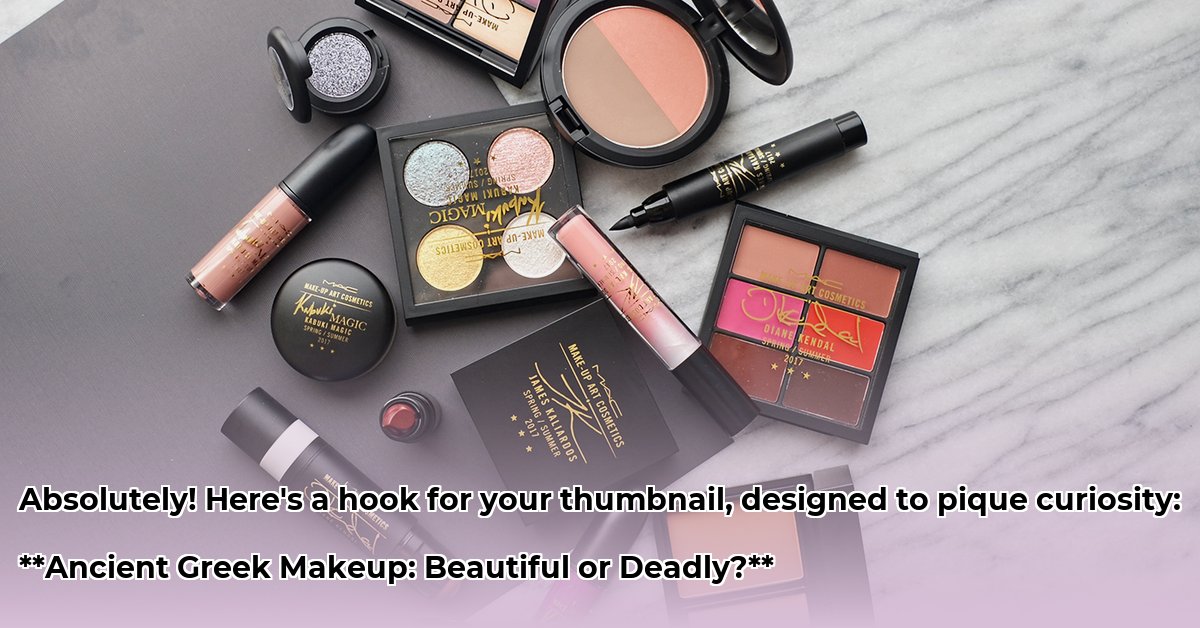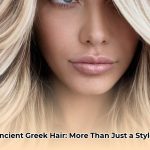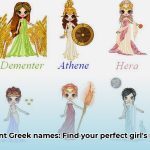Picture this: Ancient Greece. A world of gods, philosophers, and awe-inspiring architecture. Beyond the marble statues and epic tales, a fascinating story unfolds in the pursuit of beauty. The quest for that perfect Grecian glow was a very real endeavor, often involving surprisingly potent, and sometimes perilous, concoctions. Forget modern-day Instagram filters; these ancient trendsetters were incredibly dedicated to their appearance. Learn more about the ancient Greek style. We’re about to delve into the captivating beauty secrets of ancient Greece, exploring the prevalent trends, the steps they took to get ready, and why these historical practices still resonate with us today. Prepare to discover how much—and how little—has truly changed in the ever-evolving world of beauty.
Unveiling Ancient Greek Beauty Secrets
The stylish inhabitants of ancient Greece were far from embracing a purely bare-faced aesthetic. They possessed a distinct beauty repertoire, and the ingredients and application methods they favored offer profound insights into their societal values. Let’s explore some surprising facts from their ancient cosmetic bags.
The Obsession with Pale Skin (And Its Perilous Price)
Have you ever considered that a super-light complexion could be the ultimate status symbol? In ancient Greece, aspiring to skin so pale it effectively declared, “I perform no outdoor labor!” was a highly coveted ideal. This was particularly true for women, who were generally expected to remain indoors, while men were more often exposed to the sun. Ancient Greek art often depicts women as very pale and men with darker complexions, reflecting this societal norm.
To achieve this ethereal look, individuals commonly applied lead carbonate, or “white lead” (ψιμύθιον, psimýthion), a highly toxic substance. The Athenian aristocrat Xenophon (lived around 430–354 BCE), in his Socratic dialogue Oikonomikos (10.2–9), describes a displeased Ischomachos reprimanding his young wife for wearing white lead makeup, viewing it as dishonest trickery. The orator Lysias (lived around 445–380 BCE) also references the use of white lead in his speech On the Murder of Eratosthenes, where Euphiletos cites his wife’s use of makeup as a sign of infidelity.
While the pursuit of pallor was widespread, at least some ancient Greeks were aware of the dangers of lead. Nikandros of Kolophon, a Greek poet and physician (around 2nd century BCE), describes the grim effects of white lead poisoning in his poem Alexipharmaka: “It brings on a stupor, and a dreadful, heavy cough, and gnaws away the innards, and brings on a heavy, sticky, slimy discharge, and the teeth are held fast, and the body becomes pale and loses strength, and a dreadful, heavy fever comes on, and a deep sleep, and the mind is corrupted, and the bowels are twisted with griping pains.” Despite this knowledge, many women continued to use it, prioritizing beauty standards over health, much like some individuals do today.
Nature’s Pantry for Skincare (Olive Oil & Honey)
Fortunately, ancient Greek beauty practices weren’t exclusively about harsh, potentially dangerous substances. They also extensively utilized natural ingredients, many of which still find their place in modern skincare. Olive oil, a Mediterranean staple, served as a fundamental cleanser and moisturizer, providing essential hydration and nourishment. It was a core part of daily personal hygiene and body care for both men and women.
Honey, renowned for its excellent hydrating and antibacterial properties, was frequently employed as a natural primer and a key ingredient in skincare creams. Minoan women, for instance, were known to enjoy honey and milk baths. These readily available, natural elements undoubtedly offered a gentler approach to skin care, a surprising contrast to some of their more toxic choices.
Decoding Gender in Greek Cosmetics
The application of cosmetics was notably more prevalent among women in ancient Greece, particularly those from affluent backgrounds or those involved in entertainment professions, such as prostitutes. Prostitutes often viewed makeup as an essential tool for attracting customers.
However, did men also participate in cosmetic use? The answer is nuanced. Ancient Greek male authors, such as Plato (lived around 429–347 BCE) in his Gorgias, generally condemned cosmetics as dishonest pretense. Plato even suggests that men might have used makeup, referencing a situation where men substitute makeup for exercising at the gymnasion (which only men were allowed to do). While some men did engage in subtle enhancements to refine their appearance, there was a prevailing societal belief among elite males that excessive makeup on men signaled deceit or a lack of moral integrity. This highlights a clear double standard in ancient Greek beauty norms, with male authors often associating makeup with infidelity and prostitution for women.
Separating Myth from Reality (Unibrows & Lipstick)
Let’s address some persistent historical rumors and popular misconceptions, which often gain traction through unsubstantiated online claims.
- Ancient Greek Lipstick: Claims circulating online, often citing unreliable secondary sources, suggest that ancient Greek prostitutes used a unique lipstick concoction derived from sheep sweat and crocodile dung, or that they were punished for appearing in public without lipstick. For all extensive research into ancient Greek primary sources, there is no unambiguous mention of lip makeup in any form. The use of crocodile dung for cosmetic purposes is mentioned in ancient sources, but it was used as a skin-lightener, not lipstick, and primarily by Roman authors from the Roman Empire period, not Classical Greece. The punishment claim appears to be entirely fabricated.
- The Unibrow Trend: Many online sources claim that ancient Greek women considered unibrows ideal and filled in the space between their eyebrows with charcoal to achieve this look. However, there is no ancient source that explicitly supports this claim. While some later Roman artworks (like the Pompeian painting of Terentius Neo’s wife or Fayum mummy portraits) occasionally show individuals with unibrows, these are Roman, not Classical Greek, and do not indicate a universal ideal. A closer look at ancient Greek depictions of women, especially in Classical Period vase paintings, reveals that unibrows are very far from the norm. The idea likely stems from a misunderstanding of texts that mention prostitutes using charcoal to darken eyebrows in general, not specifically to create a unibrow.
It’s always prudent to take old-timey beauty advice with a grain of salt, scrutinizing the origins of such “truths.”
The “Kosmetikos” Connection: Beauty as Harmony and the Golden Ratio
Have you ever paused to consider the etymology of the word “cosmetic”? It originates from the ancient Greek word “Kosmetikos,” which encompassed a far broader meaning than merely applying superficial adornments. In its original context, “Kosmetikos” implied the act of bringing order, harmony, and balance to one’s overall appearance. This deeper significance suggests that for the ancient Greeks, beauty was intricately linked to a holistic sense of arrangement and aesthetic coherence, extending beyond simple surface-level enhancement.
This concept of harmony also extends to the ancient Greek understanding of ideal proportions, notably the “Golden Ratio” or “Phi ratio” (approximately 1:1.618). While often applied to architecture and art, this mathematical ratio was also subconsciously perceived in human beauty. Greek sculptors and mathematicians, such as Phidias, inherently incorporated this ratio into their works, suggesting a deep-seated appreciation for aesthetically pleasing proportions in the human form. This implies that their pursuit of beauty was not just about superficial application, but also about an underlying sense of balance and visual perfection.
Hair and Beards: A Status Symbol Safari
Hairstyles and beards in ancient Greece were far more than simple aesthetic choices; they served as powerful visual indicators of an individual’s social standing and their adherence to cultural conventions.
- Men’s Hair: In earlier periods (Archaic and early Classical), Greek men often wore their hair long, sometimes in elaborate curls or plaits wound around the head, held with gold or silver “curl-holders.” Long hair could signify nobility or a warrior status. By the 5th century BCE, shorter hair became more common, though Spartans and older Athenian gentlemen might retain longer styles. Hair dyes were used by both sexes; darker dyes could be made from leeches rotted in wine, while lighter ones involved beechwood ash and goat fat.
- Men’s Beards: Beards were highly prevalent, often symbolizing wisdom, maturity, and philosophical inclination. Early styles featured pointed beards without moustaches, which later evolved into full beards and moustaches. The 4th century BCE saw a shift towards shaving the entire face, especially after Alexander the Great, but a long, unkempt beard remained the distinguishing mark of Cynic philosophers.
- Women’s Hair: Free women typically wore long hair, contrasting with enslaved women who often had short hair. While single women might wear their hair loose, married women commonly tied it up, often in a bun or the famous “Greek knot.” Blonde or light hair was highly prized, equated with desirability and innocence, and often achieved through sun exposure after applying vinegar or alkaline bleaches. Elaborate hairstyles, sometimes adorned with diadems, jeweled combs, or scarves, loudly proclaimed a person’s wealth and leisurely lifestyle, signaling freedom from manual labor.
Essentially, one’s hair and beard were direct, unmistakable declarations of their status and identity within the societal hierarchy.
| Feature | Description |
|---|---|
| Pale Skin | A highly coveted indicator of wealth and leisure, achieved using hazardous white lead (ψιμύθιον) or chalk. |
| Natural Ingredients | Olive oil was a fundamental cleanser/moisturizer; honey served as a hydrating primer. |
| Gender Roles | Cosmetics were predominantly worn by women, especially elites and prostitutes; male authors often condemned makeup as deceptive. |
| Common Myths | Claims regarding specific lipstick for sex workers or the universal popularity of unibrows are largely unverified or misinterpretations of historical evidence. |
| Origin of “Cosmetic” | Derived from the Greek “Kosmetikos,” symbolizing order and harmony in appearance; linked to concepts like the Golden Ratio. |
| Hair & Beards | Acted as significant markers of social standing and conformation to prevailing cultural norms, with styles evolving over time for both men and women. |
Recreating Ancient Beauty Today: Lessons & Insights
The practices of ancient Greece offer invaluable lessons for modern consumers. We can appreciate the timeless efficacy of natural ingredients while simultaneously recognizing the critical importance of researching product components and advocating for safety within the beauty industry.
Modern Twists on Ancient Routines
While directly recreating ancient cosmetic practices using toxic lead is clearly out of the question, we can draw inspiration from their natural remedies. For instance, many contemporary companies are now harnessing ingredients like olive oil and honey, echoing the wisdom of ancient Greek skincare.
Here’s how to recreate ancient cosmetics with a safe, modern twist, focusing on natural Greek ingredients:
- Moisturizing Cleanser: Employ high-quality olive oil as a gentle yet effective makeup remover and skin cleanser.
- Hydrating Primer: Apply a thin, even layer of pure honey to hydrate and prepare the skin, creating a smooth canvas.
- Natural Blush: Utilize beetroot juice or a natural red ochre pigment, subtly applied to the cheeks for a healthy, rosy glow, similar to how ancient Greeks used alkanet dye (ἔγχουσα).
- Charcoal Eyeliner: Carefully apply finely powdered charcoal (food-grade or cosmetic-grade carbon black) with a precise brush or damp cotton swab to achieve a subtle, ancient-inspired eyeliner effect, reminiscent of how they used soot or kohl.
- Hair Lightening: For a modern take on hair lightening, consider natural methods like lemon juice or chamomile tea rinses followed by sun exposure, or consult a professional for safer chemical blonding.
Pale Skin: A Historical Status Symbol
The ancient Greek allure of pallor offers a compelling case study on how beauty ideals are often intertwined with social status. In ancient Greece, possessing pale skin was the ultimate emblem of high social standing. A fair, unblemished complexion unequivocally signaled that an individual was affluent enough to avoid strenuous labor under the sun’s harsh rays. This contrasts sharply with some modern tanning trends, prompting reflection on how societal values continuously reshape aesthetic preferences.
| Stakeholders | Insight |
|---|---|
| Cosmetics Manufacturers | Explore ancient Greek ingredients like olive oil and honey for innovative, sustainable, and ethically sourced product lines. Invest in research to re-evaluate the efficacy of historically used natural compounds. |
| Consumers | Integrate natural ingredients such as olive oil and honey into personal routines, always performing a patch-test first. Prioritize ingredient research for all beauty products, understanding their origins and potential toxicity. |
| Beauty Historians/Researchers | Diligently analyze primary sources to debunk myths and clarify historical claims, providing a nuanced understanding of ancient beauty practices. Connect beauty history with broader fields like anthropology, sociology, and public health for a holistic understanding. |
| Museums/Cultural Institutions | Design interactive exhibits featuring ancient Greek cosmetic tools, ingredients, and artworks, showcasing the health and social implications of historical beauty choices, linking them to contemporary issues of beauty standards and product safety. |
The Ancient Greek Beauty Ritual: A Step-by-Step Breakdown
So, how precisely did ancient Greeks execute their beauty routines? Let’s dissect their methodical approach, keeping in mind that practices varied by social class and individual choice:
- Step 1: The Base Layer (Skin Prep & Whitening): Achieving a pale complexion was paramount. This was often accomplished by first applying a moisturizing cream, perhaps made with honey and olive oil. Then, white lead or chalk was applied to the face, and sometimes the neck and arms, to lighten the skin.
- Step 2: Cheek Color (Blush): A rosy tint for cheeks was created using red pastes derived from iron oxide, natural ochre clay, or commonly, the root of alkanet dye (Alkanna tinctoria or ἔγχουσα). Aristophanes (lived around 446–386 BCE) mentions this in his comedy Lysistrata (lines 42–48).
- Step 3: Eye Definition (Eyeliner & Eyeshadow): For eye makeup, finely ground charcoal, soot, or carbon was mixed with olive oil to create eyeliner (ὑπογράφουσαν – “drawing under” the eyes, often around them) and eyeshadow. The Greek biographer Plutarch (lived around 46–119 CE) retells a story in his Life of Alkibiades of a prostitute applying eye makeup. The comic playwright Alexis of Thourioi (lived around 375–275 BCE) lists soot or charcoal for darkening eyebrows among prostitutes’ tricks.
- Step 4: Hair Care & Lightening: Long, wavy hair was highly prized for women, especially if it was blonde. This desired shade was often achieved through prolonged sun exposure after applying vinegar or other alkaline treatments. Men’s hair and beards were also meticulously cared for and styled according to the prevailing fashions of their era and social group.
- Step 5: Fragrance Application: Perfumes and scented oils, often infused with herbs like rosemary, thyme, mint, myrrh, cinnamon, or marjoram, were lavishly applied to different parts of the body for their pleasing aromas and purported wellness benefits.
What Ancient Greek Cosmetics Teach Us
Studying makeup in ancient Greece reveals a society grappling with evolving beauty standards, reinforcing social hierarchies, and navigating the complex relationship between external appearance and inner perception. Their cosmetic choices, while sometimes perplexing to modern sensibilities, provide an intriguing window into a world where visual presentation held profound significance. They likely approached beauty with a mindset distinct from our own, yet observing the enduring and transforming trends in cosmetics across millennia offers a fascinating historical perspective.
| Feature | Pros | Cons |
|---|---|---|
| Pale Skin Ideal | Symbolized high status, leisure, and perceived beauty. | Widespread use of highly toxic white lead, leading to severe health issues and premature death. |
| Natural Remedies (Olive Oil, Honey, Alkanet) | Gentle on skin, utilized readily available natural resources, offered genuine moisturizing/antibacterial benefits. | Limited understanding of long-term health effects of all natural compounds; some were known to be toxic (like lead). |
| DIY Approach | Cost-effective for many, allowed for personal customization based on local ingredients. | Required more effort and lacked consistent quality control, leading to unpredictable results and risks. |
| Fragrances (Herbs, Oils) | Provided pleasant scents, served as status symbols, and offered perceived therapeutic advantages. | Potential for skin irritations or allergic reactions in some individuals, especially with strong essential oils. |
| Connection to “Kosmetikos” | Elevated beauty beyond superficiality to a concept of order, harmony, and balance in one’s overall appearance. | Underlying societal belief that physical beauty implied moral goodness or social standing, creating rigid beauty standards. |
The ancient Greeks left a profound legacy that continues to influence modern beauty. The enduring appeal of natural ingredients like olive oil and honey in skincare, alongside the emphasis on diet and exercise for physical well-being, still resonates strongly today. However, their use of dangerous substances serves as a stark historical reminder: prioritizing health and safety should always take precedence over fleeting beauty trends. Beauty, both then and now, remains a complex interplay of ideals, cultural practices, and inherent risks. This historical journey certainly gives us much to contemplate, doesn’t it?
- Read Ancient Greece Texts Now: Access Online Resources - August 12, 2025
- Unlock Ancient Greece Coloring Pages: Fun Educational Activities for Kids - August 12, 2025
- Unlock the Secrets of Ancient Greek Literature: A Comprehensive Guide - August 12, 2025















